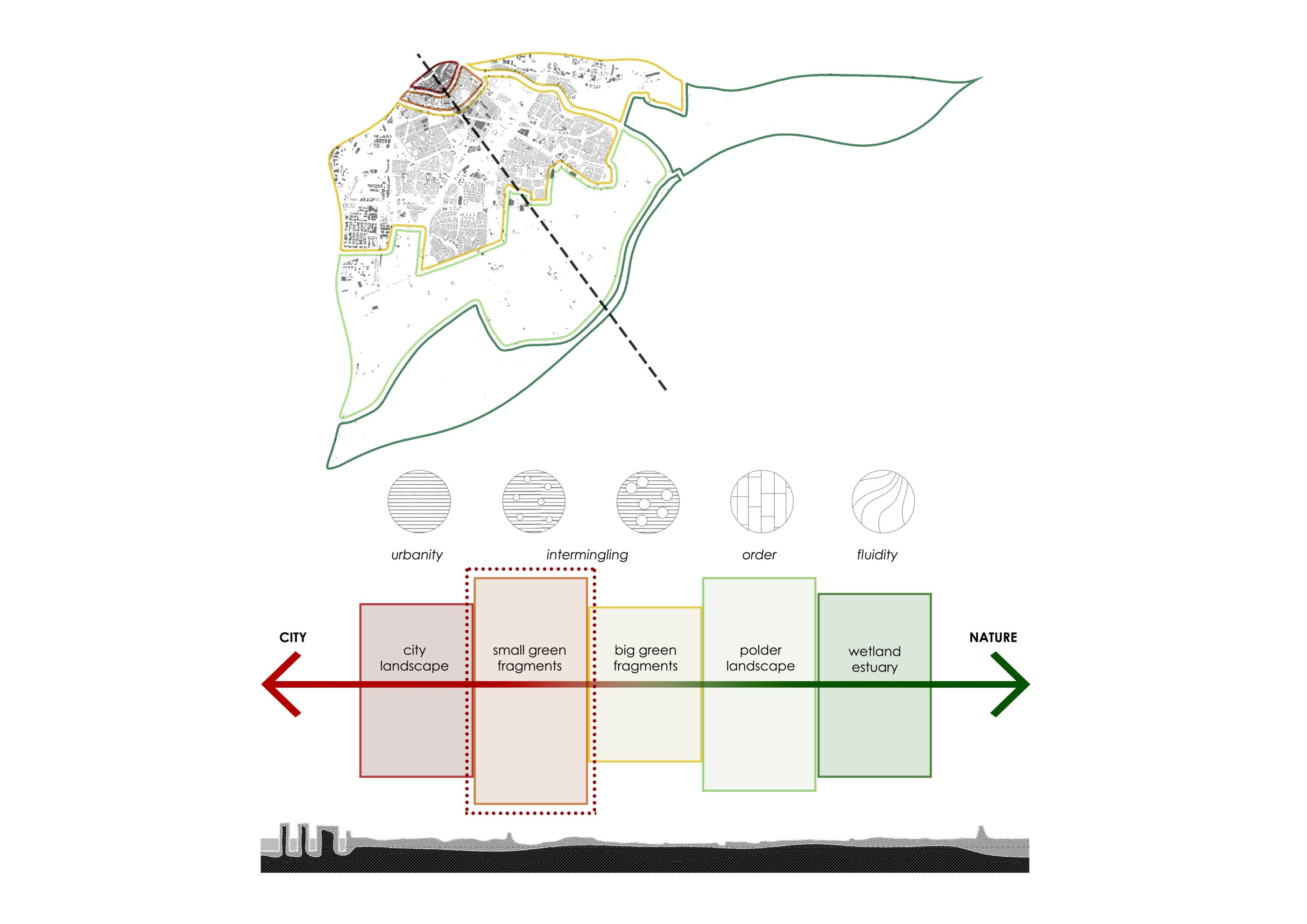Dordrecht Floodscapes: Towards the Amphibious City
Student: Maria Sachsamanoglou
Mentor: Kristel Aalbers, F.D. van Loon
Program: MSc Urbanism
Graduation date: 03-07-2018
Abstract
The aim of this project is to explore the possibilities of establishing a new relationship between water and the city of Dordrecht, aiming towards a sustainable future. In one of the lowest parts of the Netherlands, increasingly threatened by climate change and cloudburst flooding, the feasibility of a stormwater management plan is explored, intertwined with urban life through solutions such as inundation parks and floodable zones, seasonal buffers, watersquares and visible waterlines. Drawing inspiration from precedents such as the Copenhagen climate adaptation strategies, the island of Dordrecht can stand up to future challenges, through a water-resilient landscape architecture that succeeds a shift of attitude towards sustainable practices, but also strengthens the identity of Dordrecht as an attractive, historic watercity, designed to work with water, rather than against it. Water, here, becomes an agent able to transform the city into an adaptive, amphibious spatial entity, that can offer alternative urban experiences.Focusing in the area of the 19th century Schil, the city is organized through a system of buffers and waterlines, using existing or new public spaces or parts ofthe urban infrastructure. The traditional enclosed courtyard, the “hofje”, playsa key role together with private gardens and watersquares, being the main watercollectors and leading stormwater to an inundation park through a mazeof waterlines. Visible flooding processes and above-ground waterbodies composean everchanging landscape, a space with infinite faces and atmospheres,highlighting the dynamic nature of Dordrecht and bringing experience to the forefront.
Subject
amphibious
floodscape
water
cloudburst flooding
climate adaptation
sustainability
network
multifunctionality
adaptability
experience
attitude shift
urban life
public space




